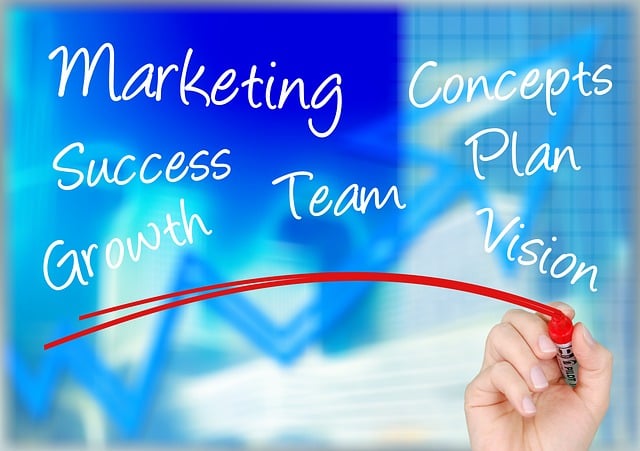In today's digital era, AI-driven table turnover optimization is revolutionizing the hospitality and restaurant industry. Advanced algorithms analyze historical data and real-time trends to predict peak hours, optimize staffing, and enhance table usage, leading to improved customer satisfaction and increased revenue. Beyond seating management, these systems offer personalized menu suggestions, automate tasks, and provide valuable insights for strategic decision-making, boosting operational productivity and cultivating customer loyalty. Implementing AI-driven table turnover optimization requires a strategic approach, including setting clear objectives, preparing quality data, monitoring performance using KPIs, and iteratively adjusting models based on analysis insights.
In today’s competitive restaurant industry, maximizing table turnover is key to success. Discover how AI business model training services are revolutionizing operations through AI-driven table turnover optimization. This article delves into the transformative power of AI, exploring strategies that enhance customer experience and streamline workflows. From understanding the concept to implementing and measuring success, we provide a comprehensive guide to leveraging AI for a competitive edge.
- Understanding AI-Driven Table Turnover Optimization
- How AI Business Model Training Services Can Transform Your Restaurant Industry
- Implementing and Measuring Success: A Step-by-Step Guide
Understanding AI-Driven Table Turnover Optimization

In today’s digital era, businesses are increasingly leveraging AI for various operational enhancements, and one such area gaining significant traction is AI-driven table turnover optimization. This innovative approach focuses on maximizing efficiency in restaurant and hospitality settings by employing advanced algorithms to manage table allocation and guest scheduling. By analyzing historical data and real-time trends, AI systems can predict peak hours, adjust staffing levels accordingly, and optimize table usage, leading to improved customer satisfaction and enhanced revenue generation.
AI-driven table turnover optimization goes beyond simple seating management. These intelligent systems can anticipate guest preferences, suggest personalized menu options, and streamline the entire dining experience. By automating repetitive tasks and providing data-backed insights, businesses can make informed decisions to create a seamless, memorable guest journey. This not only improves operational productivity but also fosters customer loyalty, solidifying the establishment’s reputation as a forward-thinking and efficient service provider.
How AI Business Model Training Services Can Transform Your Restaurant Industry

In today’s digital era, the restaurant industry is undergoing a significant transformation with the integration of AI-driven solutions. One such game-changer is AI Business Model Training Services, which offer a wealth of opportunities to optimize operations and enhance customer experiences. By leveraging advanced algorithms, these services can analyze vast amounts of data to identify patterns and trends within your restaurant, from table turnover rates to popular menu items. This deep insight enables you to make informed decisions about staffing, inventory management, and marketing strategies, ensuring your business runs smoothly and efficiently.
Imagine a scenario where your restaurant can predict peak hours with accuracy, allowing for optimal staffing levels and reduced wait times. AI-driven table turnover optimization techniques can help achieve this by studying customer behavior, identifying the average time guests spend at each table, and even predicting when a table might become available again. This not only improves customer satisfaction but also maximizes revenue potential. With such sophisticated training services, your restaurant can compete in a bustling market, offering a seamless and personalized dining experience that keeps folks coming back for more.
Implementing and Measuring Success: A Step-by-Step Guide

Implementing and Measuring Success: A Step-by-Step Guide for AI Business Model Training Services
The success of AI-driven table turnover optimization lies in a structured approach. Begin by defining clear objectives, aligning them with business goals, and identifying key performance indicators (KPIs) to measure progress. Next, carefully select and prepare your data, ensuring it’s clean, relevant, and representative of operational scenarios. This step is crucial for training robust models that generalize well. Implement AI algorithms suited for table turnover optimization, such as predictive analytics or reinforcement learning, based on data characteristics and desired outcomes.
Post-implementation, continuously monitor and evaluate the performance of your AI models using the established KPIs. Regularly compare actual results against targets to identify deviations and areas for improvement. Foster a feedback loop where insights from performance analysis guide model adjustments and retraining. This iterative process ensures that your AI business model remains dynamic, responsive, and optimized for achieving desired table turnover outcomes.
AI-driven table turnover optimization has emerged as a game-changer in the restaurant industry, offering efficient solutions for business model training. By leveraging advanced algorithms, these services can transform operations, enhance customer experiences, and ultimately drive success. Through implementing AI, restaurateurs can navigate the competitive landscape, ensuring their establishments thrive in today’s digital era. This step-by-step guide has highlighted the power of AI business model training services, providing a roadmap for restaurants to measure and maximize their impact.
